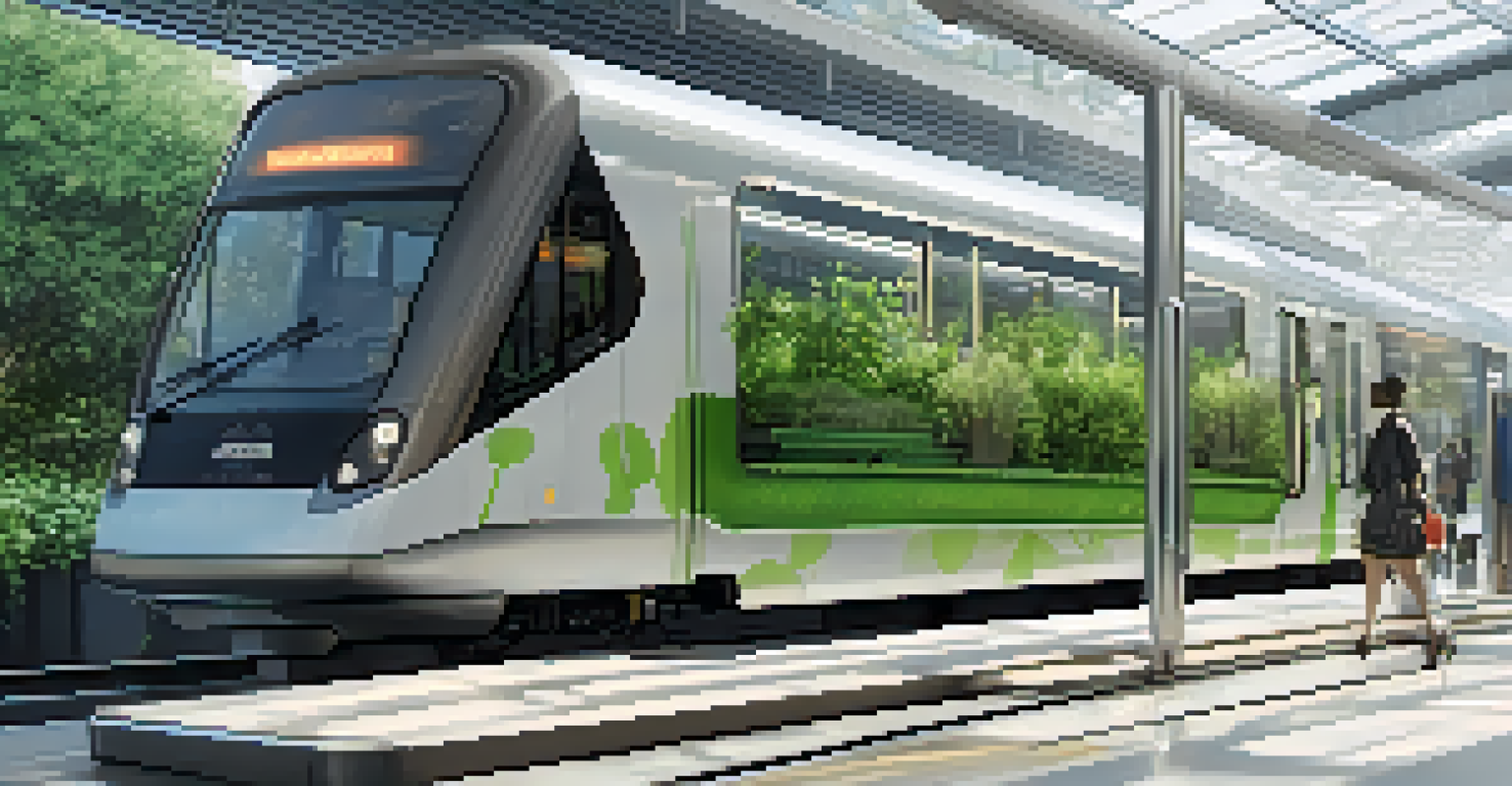Ride-Sharing vs. Public Transport: Which is More Efficient?

Understanding Ride-Sharing: A Modern Transportation Solution
Ride-sharing has gained immense popularity in recent years, allowing users to request a ride via an app. Services like Uber and Lyft connect drivers with passengers, offering a level of convenience that traditional taxis often can’t match. The flexibility of choosing your destination and the option to share rides with others can make it an appealing choice for many.
The best way to predict the future is to create it.
One major advantage of ride-sharing is its on-demand nature. You can summon a ride from virtually anywhere and at any time, eliminating the need to wait for a bus or train. This can be especially beneficial during off-peak hours or in areas where public transport is limited.
However, ride-sharing isn’t without its downsides. Surge pricing during busy periods can quickly escalate costs, making it less economical compared to public transport options. Understanding these trade-offs is crucial when considering which mode of transport to use.
Public Transport: An Affordable Alternative
Public transport systems, like buses and trains, are designed to move large groups of people efficiently. They offer a more economical option, especially for daily commuters or those on a budget. With fixed routes and schedules, public transport can provide a reliable way to navigate urban areas.

One of the key benefits of public transport is its cost-effectiveness. Monthly passes and discounted fares can make it significantly cheaper than ride-sharing, particularly for frequent travelers. Plus, many cities are investing in improving their public transport infrastructure, making it a more appealing choice over time.
Ride-Sharing Offers Convenience
Ride-sharing apps provide on-demand access to transportation, making it easier for users to get around quickly and efficiently.
However, public transport can come with challenges, such as limited routes or delays. Crowded conditions during peak hours can also detract from the experience, leading some to prefer the privacy of a ride-sharing service. Balancing these factors is essential for making an informed decision.
Environmental Impact: Which Option is Greener?
When considering sustainability, both ride-sharing and public transport have their merits. Public transport typically emits fewer greenhouse gases per passenger compared to individual cars. Buses and trains can carry many passengers at once, reducing the overall carbon footprint for urban travel.
Sustainability is no longer about doing less harm. It's about doing more good.
On the other hand, ride-sharing can contribute to increased traffic congestion if people choose it over public transport. However, many ride-sharing companies are now working towards greener solutions, such as electric vehicles and carpooling options. These initiatives aim to minimize environmental impact while still providing convenience.
Ultimately, the choice may depend on your location and the availability of services. In cities with robust public transport systems, using buses or trains can be the more environmentally friendly option. However, in areas with fewer options, ride-sharing may provide a valuable alternative.
Convenience Factor: Evaluating Accessibility
Convenience is often a primary consideration when choosing between ride-sharing and public transport. Ride-sharing apps provide instant access to rides from your smartphone, making it incredibly easy to get around. This immediacy can be a game-changer for those who value time and ease of use.
Conversely, public transport requires more planning. You need to check schedules and routes, which can be cumbersome, especially if you're unfamiliar with the system. However, once you get the hang of it, many find that public transport can be just as convenient, particularly in cities with comprehensive networks.
Public Transport is Cost-Effective
Public transport systems typically offer lower fares and monthly passes, making them a more economical choice for regular commuters.
Accessibility also plays a role. Some areas may have limited ride-sharing availability, while public transport might be more widespread. Considering your specific needs and the infrastructure in your region is key to determining which option is more convenient for you.
Cost Comparison: Breaking Down the Expenses
Cost is often the deciding factor for many when choosing between ride-sharing and public transport. On average, public transport fares are significantly lower than ride-sharing costs, particularly for daily commuters. A monthly pass can save substantial money compared to daily ride-sharing expenses, especially during peak hours.
Ride-sharing costs can vary based on factors like distance, time of day, and demand. While it can be convenient, the price can add up quickly, particularly for longer trips or during surge pricing. It's essential to weigh these costs against the convenience offered by ride-sharing services.
Ultimately, understanding your travel habits and budget can help guide your decision. If you frequently travel short distances, public transport might be the more economical choice. For occasional trips, ride-sharing could offer the convenience you need without breaking the bank.
Safety Considerations: Which is Safer?
Safety is a crucial aspect when evaluating transportation options. Ride-sharing companies have implemented safety measures like driver background checks and in-app safety features. However, incidents can still occur, leading some to feel uneasy about getting into a stranger’s vehicle.
Public transport, on the other hand, has its own safety concerns, such as crowded conditions and potential delays. However, the presence of multiple passengers can create a sense of security for some. Many public transport systems have also increased their security measures, including surveillance and emergency protocols.
Safety and Comfort Vary by Choice
While ride-sharing can provide a more personalized and comfortable experience, public transport's social environment may feel safer for some passengers.
Ultimately, personal comfort and perceptions of safety will vary from person to person. It’s essential to consider your own experiences and preferences when determining which mode of transport makes you feel safest.
User Experience: Comfort and Enjoyment
User experience can greatly influence your choice between ride-sharing and public transport. Ride-sharing offers a personalized experience, with the option to choose your preferred vehicle type and even the music playing during your ride. This level of comfort can make a significant difference, especially for longer trips.
In contrast, public transport can sometimes feel cramped or uncomfortable during peak hours. However, many systems are working on improving their amenities, such as Wi-Fi and comfortable seating. The experience can vary widely depending on the city and the specific transport service.

Ultimately, the best choice may depend on individual preferences. If comfort and personalization are your top priorities, ride-sharing might be the way to go. But if you're looking for a more social experience and don’t mind sharing space, public transport could be just as enjoyable.